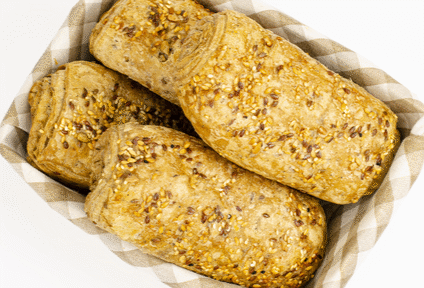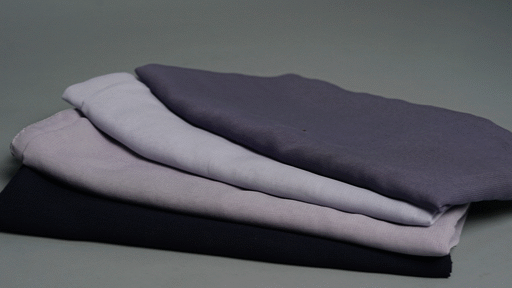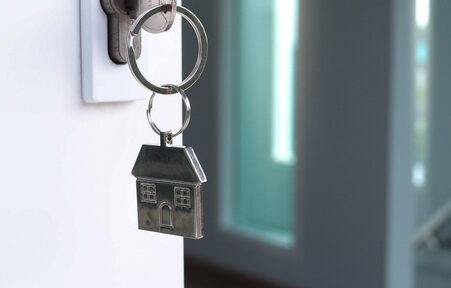Wood flooring adds warmth and character to any home, but when it becomes warped, it can quickly turn from a charming feature into an eyesore.
Whether it’s due to moisture, temperature changes, or simply the passage of time, warped wood can disrupt the aesthetic and functionality of your space.
1. Understanding Warped Wood Flooring: Causes and Effects
Warped wood flooring can be a homeowner’s nightmare, manifesting as unsightly bumps, dips, or gaps in what should be a smooth and inviting surface. Understanding the causes and effects of warped wood is the first step towards effective remediation.
Warping typically occurs due to fluctuations in moisture levels, which can cause the wood to expand or contract. This might happen in areas with high humidity, such as basements or kitchens, where spills and leaks are more common.
Alternatively, drastic temperature changes can also play a role; for instance, homes with inadequate insulation may see their wood floors warp during the winter months when the heat is cranked up.
There are several factors that can contribute to this pesky problem. One of the most common culprits is improper installation. If wood planks are tightly packed together without leaving adequate space for expansion, the natural movement of the wood can lead to warping over time.
Additionally, using low-quality or untreated wood can make floors more susceptible to moisture damage, leading to a higher likelihood of warping.
The effects of warped wood flooring go beyond mere aesthetics. Not only can it create tripping hazards and discomfort underfoot, but it can also lead to more serious structural issues if left unaddressed. Warped boards can create gaps, allowing dirt and debris to accumulate, which can compromise the integrity of your flooring over time.
Moreover, warped wood can negatively impact the overall ambiance of your home. Beautiful wooden floors are often the centerpiece of any room, and when they are damaged, the space can feel less inviting and polished. Therefore, understanding the causes and effects of warped wood flooring is crucial in not just maintaining the beauty of your space, but also in preserving the safety and durability of your home for years to come.
2. Assessing the Extent of the Damage
Start by examining the affected areas closely. Look for signs of warping, such as cupping, crowning, or buckling. Cupping occurs when the edges of the boards are higher than the center, giving them a concave appearance, while crowning is the opposite—where the center of the board is raised. Buckling is more severe, often causing the planks to lift entirely from the subfloor.
Next, take note of the size and location of the damaged sections. Is the warping localized to a few boards, or is it spread throughout an entire room? If it’s just a few planks, you may be able to replace or repair them without tackling the entire floor. On the other hand, if the damage is widespread, it might indicate an underlying issue, such as prolonged water exposure or inadequate installation, which could require more comprehensive solutions.
Don’t forget to check for moisture underneath the flooring. Use a moisture meter to pinpoint any hidden dampness that could exacerbate the warping. Understanding the moisture levels in your wood and subfloor is vital, as moisture issues must be addressed before any repairs can be successfully undertaken.
Lastly, document your findings with photographs and notes. This record will not only help you track the progression of the damage but will also be invaluable if you decide to consult with a professional. By thoroughly assessing the extent of the damage, you’ll be better equipped to choose the right repair methods and restore your wood flooring to its former glory.
3. Tools and Materials You’ll Need
Here’s a comprehensive list of what you’ll need:
Moisture Meter
Understanding the moisture content of your wood flooring is crucial, as excess moisture is often the culprit behind warping. A moisture meter will allow you to assess the current condition of the wood and determine if additional drying or treatment is necessary.
Floor Scraper or Putty Knife
For any stubborn areas where the wood has buckled or lifted, a floor scraper or putty knife can help you gently pry and smooth out the warped sections. This tool is especially useful for removing any debris or old adhesive that may interfere with the repair.
Clamps
If you’re dealing with significant warping or gaps between planks, clamps will be invaluable. These tools help hold the wood in place while it dries or sets, ensuring a tight fit and preventing future issues.
Wood Glue or Epoxy
Depending on the extent of the damage, you may need strong adhesives to bond warped pieces back together or fill in gaps. Wood glue works well for minor repairs, while epoxy is better suited for larger cracks or splits.
Sandpaper and Orbital Sander
Once the warped areas have been addressed, you may need to sand down any uneven surfaces to create a smooth finish. Sandpaper in various grits, along with an orbital sander, will help you achieve the desired level of smoothness.
Wood Filler
For minor gaps or holes left after repairs, wood filler is a great solution. Choose a filler that matches the color of your flooring to ensure a seamless appearance once the job is complete.
Finish or Stain
After repairing and sanding, it’s important to protect your wood floor. Select a suitable finish or stain that complements your flooring and provides a durable layer of protection against future moisture and wear.
Safety Gear
Don’t forget about safety! Equip yourself with gloves, goggles, and a dust mask to protect yourself from debris and harmful particles during the repair process.
4. Safety Precautions to Consider Before Starting
Before diving into the task of fixing warped wood flooring, it’s crucial to prioritize safety. Working with tools and materials can pose various risks, so taking the necessary precautions ensures that your project goes smoothly and without injury.
First and foremost, ensure you have the right personal protective equipment (PPE). A sturdy pair of safety goggles will shield your eyes from dust and debris. A good quality mask will help filter out any harmful particles that may arise during the sanding or cutting processes. Don’t forget about hearing protection if you’re using power tools that can produce loud noises.
Next, assess your workspace. Clear the area of any hazards, such as loose cables, furniture, or small objects that could cause tripping. A clean, organized workspace not only helps you focus but also minimizes the risk of accidents. Additionally, ensure your tools are in good working condition—dull blades and malfunctioning equipment can lead to unexpected injuries.
Consider the ventilation of your workspace as well. If your project involves using adhesives, stains, or finishes, ensure the area is well-ventilated to avoid inhaling fumes. Open windows and doors, or use fans to circulate air, creating a safe environment for you to work in.
Lastly, if you’re dealing with extensive damage or mold in your wood flooring, it may be wise to consult with professionals before proceeding. Mold can pose significant health risks, and understanding the extent of damage will guide you on whether a DIY approach is adequate or if expert intervention is necessary.
5. Temporary Solutions: How to Minimize the Impact
When faced with the unsightly presence of warped wood flooring, immediate action may not always be feasible. However, several temporary solutions can help minimize the impact while you plan for a more permanent fix. Understanding these strategies can alleviate some frustration and restore a semblance of normalcy to your space.
First and foremost, consider using area rugs or strategically placed furniture to cover the affected areas. A soft, stylish rug can not only hide imperfections but also add warmth and texture to your room, creating a cozy atmosphere.
Larger pieces of furniture, like sofas or coffee tables, can similarly be positioned to divert attention away from warped planks, allowing you to maintain the aesthetic appeal of your space.
Another effective approach is to adjust humidity levels in your home. Warping often occurs due to fluctuations in moisture content, so utilizing a dehumidifier or air conditioner can help stabilize the environment.
This not only minimizes further warping but can also offer relief from the visible effects of existing damage. Conversely, if your space is too dry, consider adding a humidifier to combat the issue.
If the warping is localized, you might also explore the option of using weight or pressure to help flatten those warped areas. Placing heavy books or weights on the warped boards for an extended period may gradually encourage them to return to their original position. Just be sure to cover the surface with a cloth to prevent any marks or scratches.
Lastly, while these temporary solutions can provide some relief, it’s crucial to keep the lines of communication open with a flooring professional. Documenting the extent of the warping and noting any changes over time will help when you are ready to address the issue more permanently.
6. Step-by-Step Guide to Repairing Minor Warps
Repairing minor warps in your wood flooring can be a manageable task with the right approach and tools. Here’s a step-by-step guide to help you get your floors back to their original glory.
Step 1: Identify the Problem Areas
Begin by walking through your space and identifying the sections of flooring that are warped. Look for any noticeable bumps, dips, or uneven planks. Once you’ve marked these areas, you’ll have a clear idea of where to focus your efforts.
Step 2: Gather Your Tools
You’ll need a few essential tools for this task: a hammer, a pry bar, wood glue, clamps, a damp cloth, and possibly a heat gun. Having everything on hand will streamline the repair process.
Step 3: Moisture Check
Before proceeding, check the humidity levels in your home. Warping is often caused by excess moisture. If the air is too humid, consider using a dehumidifier to bring the levels down before starting repairs.
Step 4: Lift the Warped Plank
Using your pry bar, gently lift the warped plank from the subfloor. Be careful not to damage surrounding planks. If the plank is glued down, you might need to apply a bit of heat using a heat gun to loosen the adhesive.
Step 5: Apply Wood Glue
Once the plank is lifted, apply wood glue to the underside. This will help secure it back to the subfloor once it’s placed back down. If the warp is significant, it might help to dampen the wood slightly to make it more pliable.
Step 6: Reposition and Clamp
Carefully place the plank back into its original position. Use clamps to hold it down while the glue sets. This is crucial for ensuring a tight bond and a smooth surface. Leave it clamped for at least a few hours or as recommended by the glue manufacturer.
Step 7: Final Touches
Once the glue has dried, remove the clamps and check the plank for any remaining warps. If needed, you can sand down any uneven edges to create a seamless look. Finally, clean the area to remove any excess glue or debris.
Step 8: Prevention
To prevent future warping, ensure your home maintains consistent humidity levels, and consider using area rugs in high-moisture zones. Regular maintenance and monitoring can go a long way in preserving the beauty of your wood floors.
When to Replace vs. Repair Warped Flooring
Deciding whether to replace or repair warped wood flooring is a critical step in restoring the beauty and functionality of your space. This decision often hinges on the extent of the warping, the type of wood, and the overall condition of the floor.
Start by assessing the severity of the warping. If the boards are only slightly cupped or crowned, there may be hope for repair. In many cases, a thorough cleaning, drying, and refinishing can restore your floor’s original charm.
Lightly warped sections can often be sanded down and refinished, allowing you to breathe new life into your flooring without the hefty cost of replacement.
However, if the warping is severe—characterized by pronounced buckling, gaps between the boards, or visible structural damage—it may be time to consider replacement.
Significant warping often indicates underlying moisture problems or poor installation, which can lead to further issues down the line. In such cases, not only do you risk compromising the aesthetics of your space, but you may also be exposing your home to mold or pest problems.
Another factor to consider is the age and type of your flooring. If your wood floors are made from a high-quality, timeless species and have endured years of use, repairing them might be worth the investment. On the other hand, cheaper laminate or engineered wood may not justify the repair costs when replacement could provide a more durable solution.
Ultimately, the decision to replace or repair warped flooring should be guided by a combination of practical assessment and emotional investment in your space.
Assess the damage, weigh the costs, and envision the long-term impact on your home.
8. Techniques for Restoring Severely Warped Boards
When it comes to restoring severely warped wood flooring, tackling the issue effectively requires a combination of patience, precision, and the right techniques. While minor warping can often be addressed with simple methods, more pronounced defects may need a more detailed approach to restore the beauty and functionality of your floors.
1. Moisture Adjustment:** One of the primary causes of warping is moisture imbalance. Begin by assessing the humidity levels in your space. If the boards are too dry, introduce moisture back into the wood using a damp cloth or a water mist spray, allowing the fibers to absorb the moisture gradually.
For severely warped boards, placing a humidifier in the room can help restore the natural balance without overwhelming the wood.
2. Heat Application:** Another effective technique involves using heat to help reshape the warped boards. Place a damp cloth over the affected area and apply heat using an iron on a low setting. The combination of heat and moisture allows the wood fibers to relax and potentially return to their original position. Be cautious, as too much heat can cause further damage.
3. Weight Method:** For pronounced warping, employing the weight method can work wonders. After applying moisture, place heavy objects—such as books or bricks—over the warped sections. Ensure the weight is evenly distributed and leave it in place for several days. The prolonged pressure can help flatten the boards as they dry out.
4. Board Replacement:** In some cases, a board may be too warped to restore. If you’ve tried the above methods with little success, consider replacing the damaged boards.
Carefully remove the warped section and replace it with a new board, ensuring that it matches the surrounding flooring in color and grain for a seamless appearance.
5. Professional Help:** If the damage is extensive or you lack the tools and experience for a DIY approach, seeking professional assistance may be your best option. Experienced flooring specialists can assess the situation, provide tailored solutions, and execute repairs with precision, ensuring that your wood flooring not only looks great but also remains structurally sound.
Restoring severely warped wood flooring is a challenging yet rewarding endeavor. By utilizing these techniques, you can breathe new life into your floors, enhancing both the aesthetics and value of your home. Remember, the key is to be patient and persistent—your beautifully restored wood flooring is just a few steps away!
9. Preventative Measures: Avoiding Future Warping
Preventing future warping of your wood flooring is essential not only for maintaining its beauty but also for prolonging its lifespan. By taking proactive steps, you can protect your investment and enjoy a stunning floor for years to come. Here are several effective strategies to keep your wood floors in pristine condition.
First and foremost, humidity control is key. Wood is a natural material that reacts to moisture in the environment, so maintaining stable humidity levels in your home is crucial.
Invest in a high-quality humidifier during dry months and a dehumidifier in the summer to regulate the air’s moisture content. Ideally, aim for indoor humidity levels between 30% and 50%.
Next, be mindful of your flooring’s exposure to water. Quickly clean up spills and avoid using excessive water when mopping, as moisture can seep into seams and lead to warping. Opt for a damp mop and a wood-safe cleaner to keep your floors clean without compromising their integrity.
Additionally, consider using area rugs in high-traffic zones or areas prone to spills, such as entryways or dining areas. These rugs can act as a barrier, protecting the wood from dirt, moisture, and scratches that can contribute to warping over time.
Lastly, ensure proper installation and ventilation. If you’re considering new flooring, hire a professional to install it correctly, taking care to leave adequate space for expansion and contraction.
Furthermore, make sure your home is well-ventilated, especially in areas where moisture is prevalent, like basements or bathrooms. Proper airflow helps prevent trapped humidity, which can lead to warped floors.
By implementing these preventative measures, you can significantly reduce the risk of future warping and enjoy the natural elegance of your wood flooring for many years to come. Remember, a little effort today can save you from costly repairs tomorrow!
10. Maintaining Your Wood Flooring for Long-Term Health
Maintaining your wood flooring for long-term health is essential to preserving its beauty and durability. Proper care not only enhances the aesthetic appeal of your space but also extends the lifespan of your flooring, ensuring it remains a valuable investment for years to come. Here are some key practices to follow for effective maintenance.
Regular Cleaning
Start with a consistent cleaning routine. Sweep or vacuum your wood floors regularly to remove dust, dirt, and debris that can scratch the surface. Use a soft-bristle broom or a vacuum equipped with a wood floor attachment to avoid causing any damage.
For deeper cleaning, use a damp mop with a wood-safe cleaner, ensuring that excess water is not left on the floor, as moisture can lead to warping.
Humidity Control
Wood is sensitive to changes in humidity. To prevent warping, aim to maintain a stable indoor humidity level between 30% and 50%. Invest in a dehumidifier or humidifier depending on your local climate. During the hot summer months, use air conditioning to help control moisture levels and prevent bowing or buckling in your flooring.
Protect Against Scratches
Place felt pads under furniture legs to minimize scratches and dents caused by movement. Additionally, consider using area rugs in high-traffic zones or under furniture to provide an extra layer of protection.
Be mindful when wearing shoes with hard soles or heels, as these can also contribute to surface damage.
Address Spills Immediately
Accidents happen, but prompt action is vital. Wipe up spills as soon as they occur using a soft cloth to prevent moisture from seeping into the wood. For sticky substances, use a damp cloth with a mild soap solution, followed by a dry cloth to ensure no moisture remains.
Periodic Inspections
Regularly inspect your wood flooring for any signs of damage or wear. Look for loose boards, gaps, or discoloration. Early detection of issues can save you time and money, allowing for timely repairs before problems escalate.
Professional Maintenance
Consider scheduling professional cleanings and inspections annually. Experts can provide deep cleaning and refinishing services that are necessary to restore the floor’s luster and protect against future damage.
Hiring a Professional vs. DIY: Making the Right Choice
When it comes to fixing warped wood flooring, one of the most critical decisions you’ll face is whether to hire a professional or tackle the project yourself. This choice depends on several factors, including your budget, skill level, and the extent of the damage.
Hiring a Professional
Opting for a professional can bring peace of mind, especially if you’re dealing with significant warping or complex installation issues.
Experienced contractors have the expertise to assess the situation accurately and recommend the best course of action—be it refinishing, replacing boards, or even addressing underlying moisture problems.
They also have access to specialized tools and materials, which can make the process quicker and more efficient. Furthermore, hiring a professional can save you from potential mistakes that could lead to further damage, ultimately protecting your investment.
Going DIY
If you’re handy and have some experience with home repairs, a DIY approach can be a rewarding and cost-effective choice.
There are plenty of resources available, from online tutorials to community workshops that can guide you through the process of fixing warped flooring
Tackling the project yourself allows for a sense of accomplishment and can save you money on labor costs. However, be sure to realistically assess your skills and the time you can commit to the project.
Making the Right Choice
Ultimately, the decision should be based on a careful evaluation of the severity of the warping, your confidence in your DIY abilities, and your budget. If the damage is minor, a DIY fix with some basic tools and materials might be all you need. For more extensive issues, or if you’re unsure where to start, bringing in a professional can ensure the job is done right. Remember, the goal is to restore your wood flooring to its former glory, so weigh your options wisely and choose the path that aligns best with your needs and capabilities.
FAQs About Warped Wood Flooring
When it comes to maintaining the beauty and integrity of your wood flooring, questions often arise, especially concerning warping. Here, we address some of the most frequently asked questions to help you better understand this common issue and what you can do about it.
What causes wood flooring to warp?
Warping can occur due to a variety of factors, with moisture being the primary culprit. Wood is a natural material that absorbs and releases moisture, and excessive humidity or water exposure can lead to deformation. Temperature fluctuations, poor installation, and even heavy furniture can also contribute to the problem.
Can warped wood flooring be fixed?
Yes, in many cases, warped wood flooring can be repaired. The approach depends on the extent of the warping. Minor warps may correct themselves with proper acclimatization and humidity control, while more severe cases may require professional intervention, such as sanding, refinishing, or even replacing planks.
How can I prevent my wood flooring from warping?
Prevention is key in maintaining the integrity of your wood floors. Start by ensuring proper installation, including leaving expansion gaps. Use a dehumidifier in areas prone to moisture and maintain a consistent indoor climate. Regularly check for leaks and spills, and promptly address any water damage.
Is it safe to walk on warped wood flooring?
While minor warps may not pose immediate safety hazards, they can create uneven surfaces that may lead to trips and falls. It’s best to assess the degree of warping and take appropriate measures to either repair or avoid walking on significantly warped sections until they are fixed.
When should I call a professional?
If the warping is extensive, or if you’re uncertain about the extent of the damage, it’s wise to consult a flooring professional. They can provide a thorough assessment and recommend the best course of action, ensuring your flooring is restored to its former glory while preventing future issues.



